"You have to have a canon so the next generation can come along and explode it." -Henry Louis Gates
When it comes to stars, their fates are very well known. Every single star that's massive enough to fuse hydrogen into helium in its core will someday run out of fuel and die.
The very brightest and most massive stars -- about 1-in-800 of all stars -- will die in a spectacular, core-collapse supernova when their core burns fuel all the way through iron and finally runs out of room to go.
When they run out of fuel, however long it takes and whatever element it stops at, the core of the star (or the entire star, in the case of an M-class star) contracts down to a degenerate mass of atoms, held up only by the Pauli Exclusion Principle, preventing the electrons in the atoms from getting any closer together.
This results in an object that's about the physical size of planet Earth, but about the mass of an entire star, some 300,000 times denser than Earth. That's what a white dwarf star is.
And for some of these white dwarfs, this is the end of the line. Over time, they'll cool and radiate energy away, finally dimming out and becoming ultra-cold black dwarfs, on timescales of at least quadrillions of years.
But some of these white dwarfs will get a second chance to make their voices heard across the cosmos.
A different type of supernova -- a Type Ia supernova -- can happen if the circumstances are right. You see, the reason that the heaviest-mass stars become a Type II supernova is because the atoms in the core, even with the Pauli Exclusion Principle, cannot stand up against collapse.
The very atoms in the core are subject to tremendous outside pressures, and if the core itself -- no longer fusing any elements and thus devoid of new radiation -- is too massive, it will have no choice but to collapse even further.
In the case of a normal atoms (as in a white dwarf star), this will happen if the mass reaches or exceeds about 1.4 solar masses, known as the Chandrasekhar mass limit.
If a white dwarf star acquires enough mass that this limit is exceeded, or that some other process creates too strong of a pressure at the core, a runaway fusion reaction occurs, destroying the entire white dwarf in a catastrophic Type Ia supernova.
Above is the remnant of the Supernova first observed on Earth in 1006, the brightest ever recorded in history. This composite image (including X-ray data on the interior) shows what happens in the aftermath of such an event.
These Type Ia supernovae are the most abundant type of supernovae in the Universe. But the question remains, how do these events occur? First off, it's pretty clear that these events are not all identical. Because the laws of physics are the same everywhere, if all Type Ia supernovae were identical, the light curves of each of them would be identical. And they're similar, but there's quite a bit of variety.
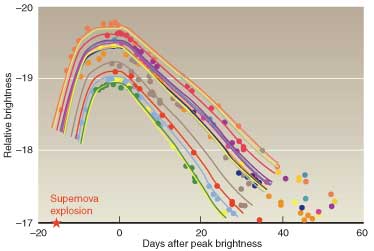
Image credit: J. Nordin et al., 2010, from http://arxiv.org/abs/1011.6227v1.
It used to be thought that these supernovae came about because, in binary star systems, the very dense white dwarf could siphon mass off from its companion star, doing so until it eventually exceeded this Chandrasekhar mass limit. And then, when the white dwarf got too massive, the atoms in the core would give way, there'd be a runaway fusion reaction, and a Type Ia supernova would result.
But this process would be far too rare, and also far too uniform, to explain the Type Ia supernovae that we presently see.
At this point in the Universe, white dwarfs have already become the second most abundant type of star around. So a second possibility was brought up: perhaps two white dwarf stars spiral into one another, and will eventually merge, exceeding the Chandrasekhar mass limit when they do! (Video may trigger seizures in epileptics; audio is based on the frequency of gravitational radiation.)
But a new theory proposed by J. Craig Wheeler -- the White Widow model -- just might be the solution to where the majority of these supernovae come from.
Rather than a slow siphoning of mass or a rare white dwarf-white dwarf inspiral, these supernovae could be caused by interstellar collisions between white dwarfs and other, normal stars, including the most abundant of stars, the class-M red dwarfs.
As Wheeler himself says:
"I believe that the spectra have to be respected. The really high-order constraint [on a supernova model] is to get the spectral evolution correct. That is, you've got to get all the bumps and wiggles, and they've got to be in the right place at the right times."
Because all you have to do is create an instability in the core of this white dwarf, and runaway fusion will undoubtedly occur all over the star, as the following simulation of a white dwarf's temperature and density shows nicely.
I'll likely be out of touch for the next few days while I'm at Carl Sagan Day (remember?), so for those of you who can make it, I hope to see you there, and for those who can't, I'll be back on Monday!

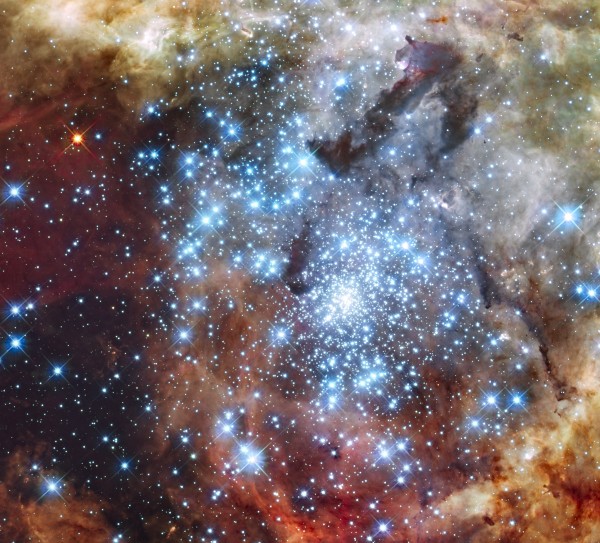
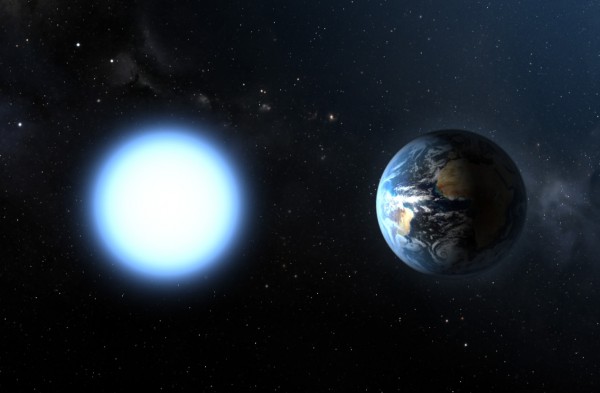
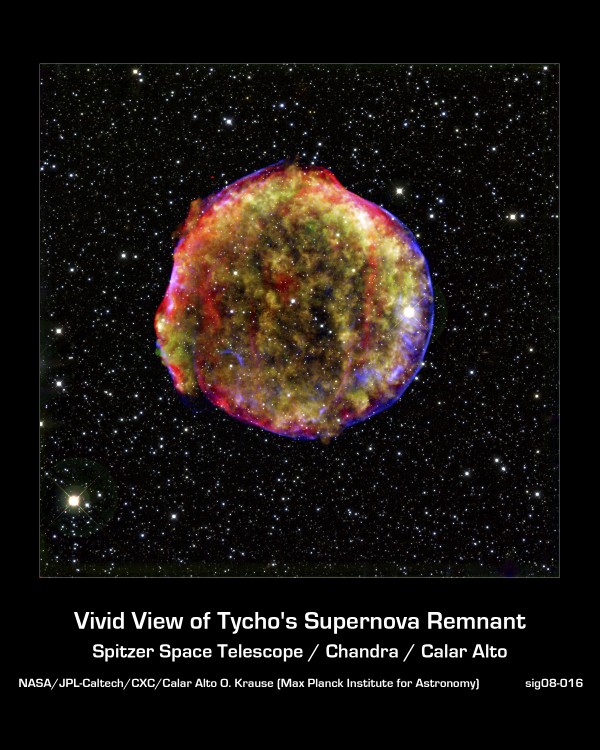

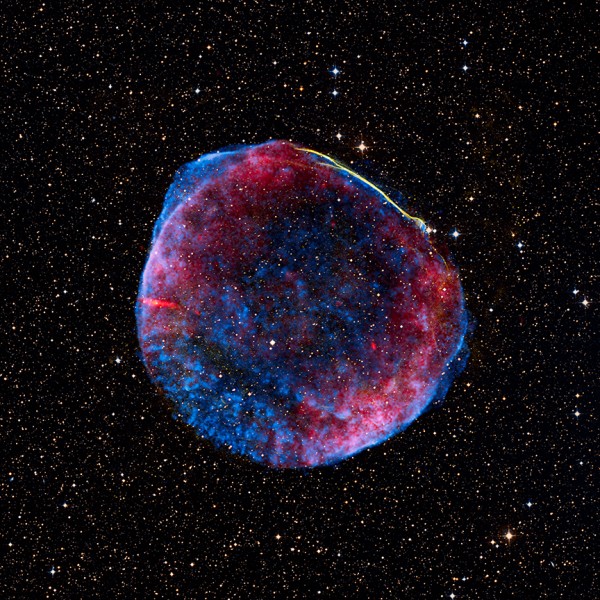
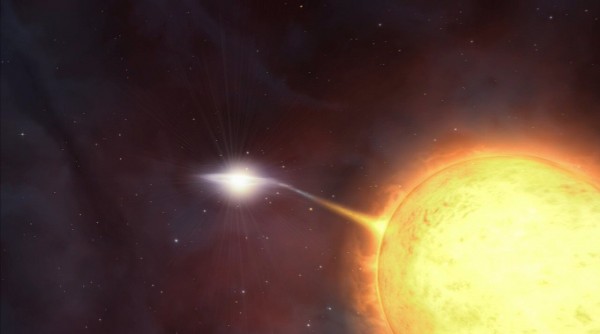
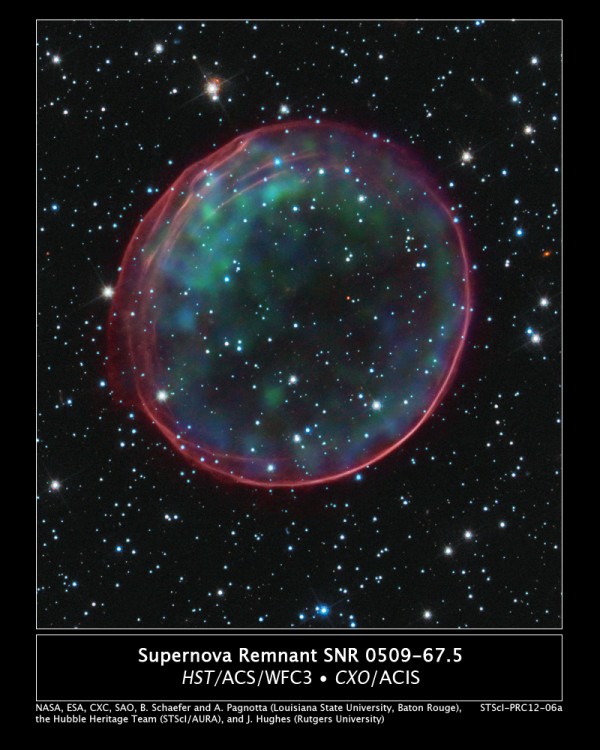
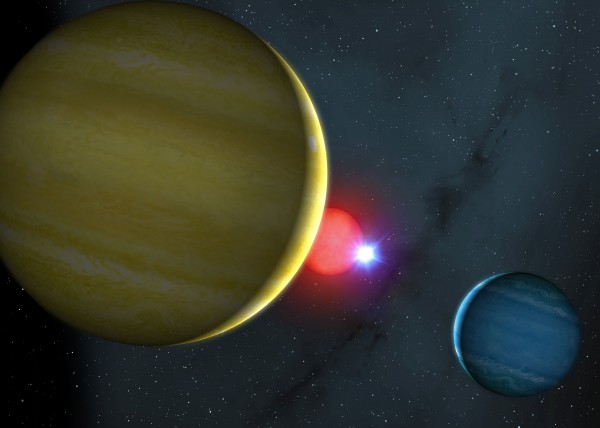
Great explanation of this exciting new research.
I'll have to reread the links, but it seems like excellent research.
Thanks, Ethan
And enjoy Carl Sagan Day
"In the case of a normal atoms (as in a white dwarf star), this will happen if the mass reaches or exceeds about 1.4 solar masses, known as the Chandrasekhar mass limit.
If a white dwarf star acquires enough mass that this limit is exceeded, or that some other process creates too strong of a pressure at the core, a runaway fusion reaction occurs, destroying the entire white dwarf in a catastrophic Type Ia supernova."
You're confusing two issues. When Chandrasekhar limit is reached, a white dwarf collapses into a neutron star. That's it, there might not be any further fusion. The main energy source of the supernovae in this case is good old gravitational potential energy (fusion of electrons and protons releases some energy in form of neutrinos, but its impact is fairly small).
However, recent models point out that this in fact does NOT happen in most Ia supernovae. Instead, _just_ _before_ the Chandrasekhar limit is reached carbon burning is ignited. This burning happens catastrophically, releasing enough energy to totally unbind the star. There's literally nothing left after the explosion: no white dwarf, no neutron star, no planetary system.
Alex, those models are probably wrong.
At least if they're saying nothing is left. Which I doubt, but could be true of some models.
When the carbon shell ignites, there will be a lot of the mass that would form a neutron star thrown off instead because that mass is in the carbon shell and half of that mass is outside the median of that shell. This could easily be thrown off.
But the stuff closer to the star's centre than the median?
Thrown inward.
I thought the case against Ia origins included calculations that mass transfer from companion to binary would make far too many x-ray binary sources, especially if the WD initial mass was only 0.6Msun, which is typical WD mass. Does the White Widow model get around this problem?
If I understand the models correctly, it's not just a shell that detonates, but the entire star. A shock wave spreads out from the point where detonation is initiated, so that even if some of the mass is thrown inward, it still engages in fusion due to the enhanced pressure of the shock wave. Eventually the shock front reaches the center of the star, and it is no longer possible to throw mass inward. Thus, as Marvin the Martian would say, an Earth-shattering kaboom.
The Chandrasekhar limit applies when degeneracy pressure is the only thing counteracting gravity. Depending how the contraction or collapse occurs, you could get enough pressure in places to produce an exothermic fusion reaction (because the original star was never heavy enough to produce an iron core).
It's a bit of "neither is entirely wrong", Eric.
From what I remember, stars will sort of fractionate their fusion products (largely). This causes shells of Hydrogen, Helium, Carbon, Oxygen, etc.
The energy released per unit time for a fusion reaction goes up quickly with temperature (can't remember the order for H-H fusion, but the steps are right). T is temperature
H-H ~ T^8
He-He ~ T^14
C-C ~ T^16
So the reactions are very low (practically zero) at low temperatures but soon after they become possible, they quickly outpace the energy production of the slower increasing lighter element fusion.
That means when you get fusion in the Carbon shell, you get a LOT of fusion (there are all the upper layers holding it in).
Boom.
Of course, the extra boom from below causes even more fusion in the higher levels. Each introduce their own boom.
So it's a bit of both.
Lately I've been wondering how chunky the material blown out of a supernova is. Is the explosion just a mist of vaporized particles, or are there sizable chunks of metals and other solids as well? How large might one of these core fragments conceivably be? I would speculate the size distribution follows a power law function, but that's just a guess. If it is a mist of vaporized particles, then how would iron asteroids consolodate and form?
Can anyone comment on this?
Alan, have a look at the Veil Nebula, the result of a nearby supernova.
http://en.wikipedia.org/wiki/Veil_Nebula
As to your question: gas clouds collapse. If they collapse into smaller lumps, they only form planets. Bigger lumps, stars.
If a star forms from a collapse, the photon pressure from the star will strip away the gas cloud and stop much more collapse happening, hence in our solar system, where the inner planets didn't form in a dense area of cloud, we only have the rocky planets, wheras jupiter could gain weight quick enough to retain Hydrogen and Helium and ate up a lot of extra mass before the sun grew bright enough to stop it.
Thanks for the response Wow, but I don't think this addresses my question at all. I'm familiar with the basics of planetary evolution, and that wasn't what I was asking about.
My question was: Is there any "schrapnel" from a supernova explosion, or is it purely a hot gas of particles?
Alan,
There is -- in a Type Ia -- possibly sometimes some shrapnel, as you put it. Take a look at SN 1006, for example. Yes, there's the diffuse gas inside the bubble, but there's also a thin "ribbon" of dense matter at just one location on the bubble surface. (See here.)
The remnant of Kepler's supernova (SN 1604) also shows a similar visual "firework" structure, here.
It is unclear if this is the shockwave slamming into gas from the interstellar medium, or if this is shrapnel from the original explosion itself, but either way this is clearly more than just a "diffuse gas". Type Ia's tend to be roughly spherical, however, with most of the energy contained in the "bubble walls" as far as we can tell.
Sorry this isn't a definitive answer, but I hope it addresses some of your concerns.
Wow,
"At least if they’re saying nothing is left. Which I doubt, but could be true of some models.'
Sure, in other scenarios neutron star remains.
"When the carbon shell ignites, there will be a lot of the mass that would form a neutron star thrown off instead because that mass is in the carbon shell and half of that mass is outside the median of that shell. "
Again, you're thinking about a normal star. We're talking about a white dwarf, it doesn't have enough MASS to become a neutron star. Also, it's very homogeneous because it mostly consists of a carbon ash from a star core, there are no distinctive shells. There's a thin crust of helium and hydrogen on the surface, but we can safely ignore it.
Also, white dwarves are supported by degeneracy pressure so there are two additional compounding factors - degenerate matter is incompressible and it is very heat conductive.
So once carbon burning starts (models show that it happens near the center of the star) you have a perfect storm. The burning wave actually initially moves faster than the speed of sound (which is a good percent of lightspeed at these frequences!), so it's really an earth-shattering detonation.
"Again, you’re thinking about a normal star. We’re talking about a white dwarf,"
We can't be.
A white dwarf doesn't go nova. Or supernova. Or collapse. It IS collapsed. White dwarf is the end point.
If this post is indicative of your understanding of stellar evolution, you need to get back to Astrophysics 101.
Thanks Alex for provide "up-to-date" info on white dwarfs and pointing out that they explode just below the Chandrasekhar limit. As Dr. Wheeler said, the idea of the limit being exceeded causing the dwarf to explode is appealing, easy to visualize but wrong for the past 50 years. Ethan please take note, Cosmic Catastrophes, 2nd Ed, Dr. J.Craig Wheeler, pg 104. ;)
Also, I read the press release. It doesn't support your interpretation of the triggering mechanism of Ia supernovas, .i.e., "interstellar collisions between white dwarfs and other, normal stars".
Rather, Wheeler is just saying that instead of an evolved red-giant or another CO white dwarf, the companion star to the white dwarf is a class-M dwarf.
Wow,
"A white dwarf doesn’t go nova. Or supernova. Or collapse. It IS collapsed. White dwarf is the end point."
It can't do these things in _itself_. However, it can accrete matter from a companion star. If it accretes matter slow enough then you get novas (http://en.wikipedia.org/wiki/Nova ) which are essentially large thermonuclear explosions that happen on the surface of a white dwarf.
If a novae doesn't happen fast enough to expel accreted matter - then you get an Ia supernova.
And therefore your assertions about "when things go nova" cannot be talking about white dwarfs.
Wow,
Please, just type "nova" into Google and read the Wikipedia article. Let me quote a relevant passage: "A nova (plural novae) is a cataclysmic nuclear explosion in a white dwarf star. It is caused by the accretion of hydrogen on to the surface of the star, which ignites and starts nuclear fusion in a runaway manner. Novae are not to be confused with supernovae or luminous red novae."
And a white dwarf doesn't come before a nova.
So how can, when the subject is about what happens DURING a nova or supernova, white dwarfs be what you're talking about?
ESPECIALLY when you maintain that there would be nothing left there (i.e. after the event: NO WHITE DWARF).
I know what nova means.
I know what white dwarf means.
I know you're talking shite.
Maybe you need to read up on "Accreting Dwarf Binary" where a periodic variable can be caused by a white dwarf around a giant sun and where the accumulation of matter from the larger gas giant onto the surface of the white dwarf can lead to a nova event.
That is the only place where the white dwarf exists before the event.
However, that has even less chance of causing a complete destruction of the white dwarf because the white dwarf is already super condensed matter.
The ONLY possible way (apart from being torn up going in to a black hole) to disrupt a star to nothing is to do so BEFORE it becomes ultradense matter.
i.e. BEFORE it goes nova.
Even then I doubt extremely that it is actually even theoretically possible.
>That is the only place where the white dwarf exists before the event.
And in Ia supernovae: http://en.wikipedia.org/wiki/Supernova#Normal_Type_Ia
And yes, there's literally nothing left after the explosion. White dwarves have more than enough nuclear fuel to unbind themselves.
Yeah I was still concentrating on the version of reality that could possibly render a star's core nonexistent when it goes supernova.
But one that is an accretion supernova event is DEFINITELY NOT one of them.
The white dwarf is far far far FAR too dense to manage to be blown apart if it is heavy enough to retain the new envelope long enough to get a supernova.
A very small (and I'd be gobsmacked if it were even a 0.1 solar mass) white dwarf could become ripped apart if it were next to a supernova. But itself would not be able to retain the temperatures and pressures necessary to get a supernova event underway: the atmosphere would be blown off far far too early.
White dwars DO NOT have enough nuclear fuel to unbind themselves. It can't be ignited quickly enough and asymetrically.
It would be like trying to crush an egg by putting it in your hand and squeezing all the way around.
Not possible.
Wow.
You seem to have severe problems with reading comprehension. What dwarf becomes a supernova. The _whole_ white dwarf.
Explosion starts near the dwarf's barycenter and proceeds to destroy it completely. The dwarf's atmosphere probably doesn't even have enough time to engage in fusion before being blown apart by _neutrinos_.
No, you seem to have memory problems, Alex.
YOU claimed that the entire star could be ripped apart.
I said "Bollocks. Unless it's very small, but otherwise complete bullshit".
You seem to be segueing off to something completely different (and rather in line with the message Ethan gave at the top of the thread).
But a white dwarf ABLE to go supernova by accretion WILL NOT be ripped apart by going supernova.
A Brown Dwarf going supernova because of accretion MAY possibly be small enough to rip itself apart.
A white dwarf heavy enough to go supernova WILL NOT rip itself apart when it does. "the whole white dwarf going supernova" has feck all to do with that. It has to be heavy to GO supernova and if it is that heavy, it will NOT be able to be ripped apart by it going nova.
WILL NOT.
And what the fucking fuck are you blithering on about "blown apart by neutrinos" now????
You're going freaking nuts, mate.
Your cataclysm does NOT happen.
If the white dwarf doesn't undergo fusion IT DOESN'T GO SUPERNOVA (negating your idiotic "The _whole_ white dwarf" bollocks) because it would be merely the shell accreted going nova.
Your brains have exploded and dropped out your arse. Check your kecks for the bits.
I like this post, enjoyed this one regards for posting. "Good communication is as stimulating as black coffee and just as hard to sleep after." by Anne Morrow Lindbergh.
Wow, you're a moron.
Ethan, can you sort out this discussion?
Sanity check needed on the assertions.